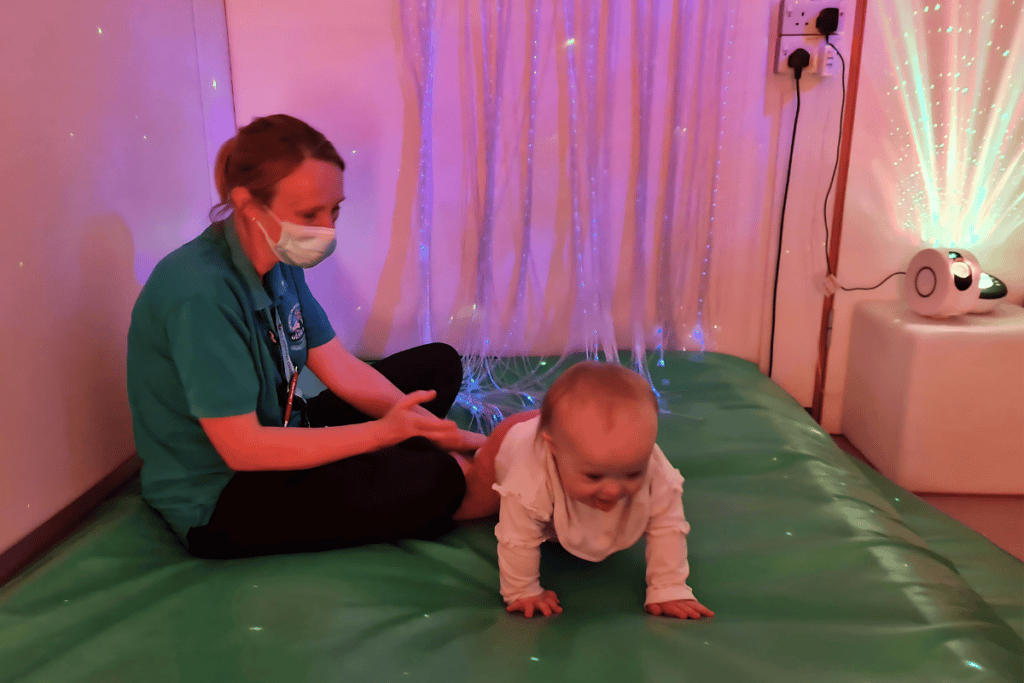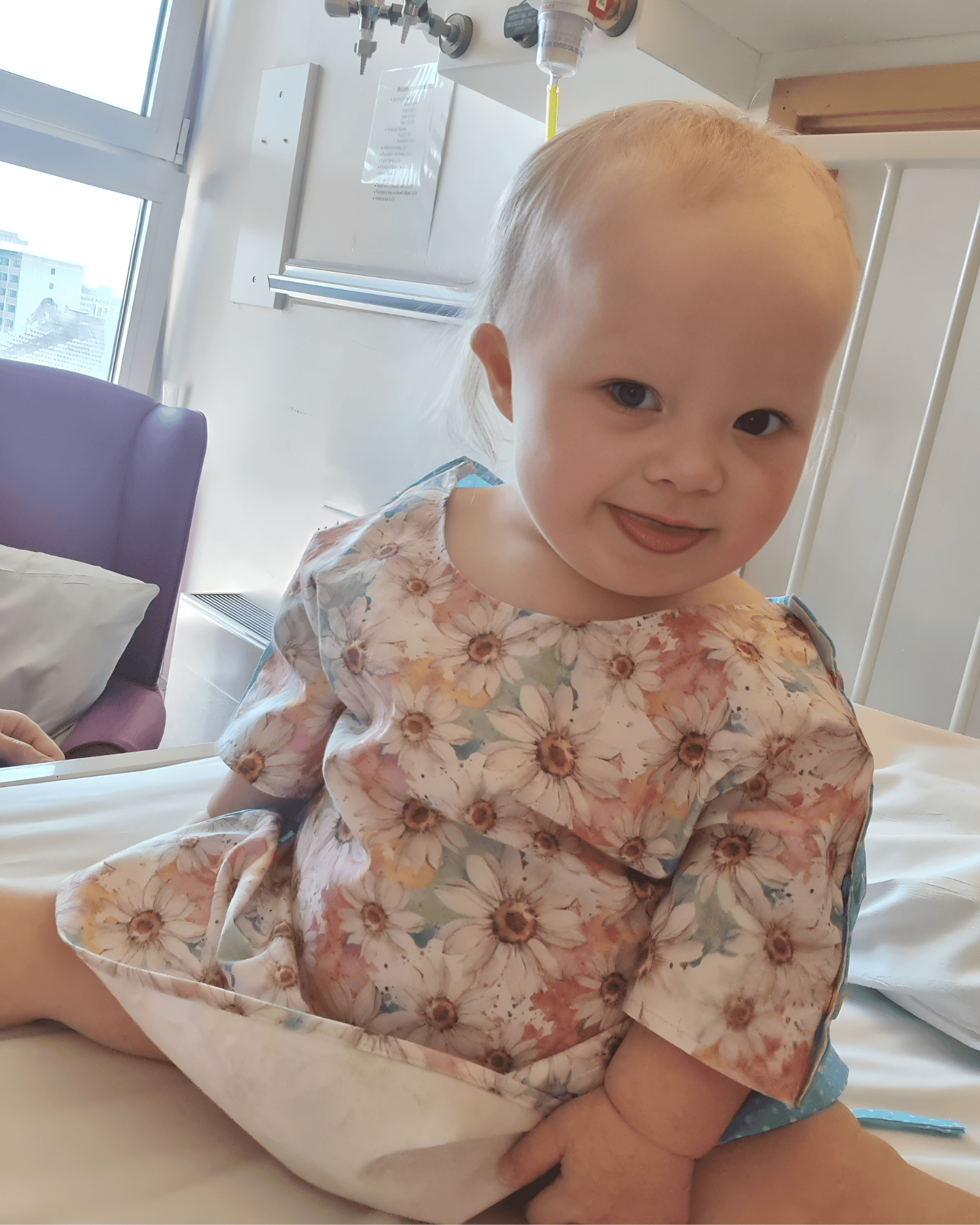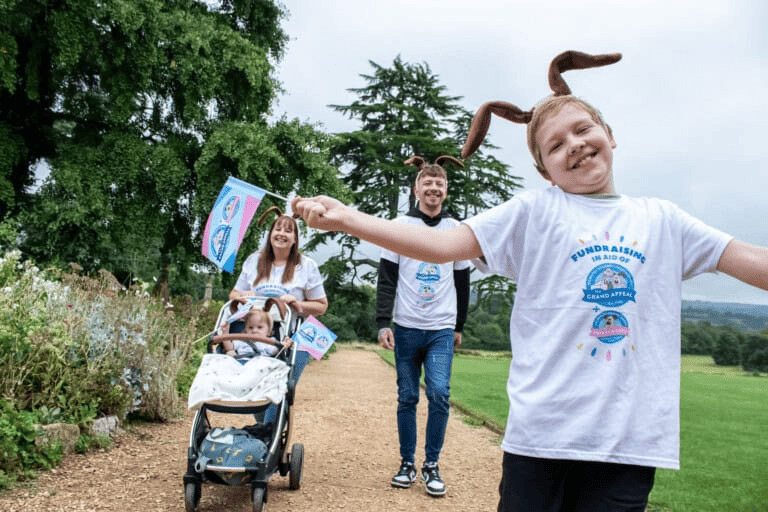Two-year-old Hope hasn’t had an easy start in life. From heart surgery as a baby to treatment for leukaemia as a toddler, she’d been through a lot in her two years – but her mum and dad, Joanne and James, have never doubted her strength and resilience. Read on for Hope’s story.
“When Hope was born, she was born with a hole in her heart. We were initially in Bristol Children’s Hospital, in Dolphin Ward and the Paediatric Intensive Care Unit, for Hope to have heart surgery to repair it. We lived an hour and a half away from our home in Taunton and were wondering how on Earth we were going to work out the logistics of staying by Hope’s side. So when The Grand Appeal gave us a room in one Grand Appeal House, of their homes-from-home, we were so grateful.
Eight months later, we found ourselves back in hospital when Hope developed a hernia that had formed due to her open-heart surgery. It wasn’t too serious – but the surgeon wanted to get it sorted out so that Hope would be comfortable.
We went in for the pre-op, where she had some blood tests done. But then, we were called back in for more blood tests, ones that didn’t make sense for a hernia surgery, and then a bone marrow surgery. Everything started to feel quite scary. They were being a little vague – I guess they wanted to make sure they had all the evidence before they told us – but I just knew. Right away, I just knew she had leukaemia.
Children with Down’s Syndrome are more predisposed to leukaemia, which is something we discovered through our own research when we found out Hope would be born with it.
Joanne, Hope’s mumIn hindsight when we look back, she had a few bruises, but she’d just started to move around a bit more. And little ones get bruises, don’t they? And even then, I’d said, ‘she’s got this bruise, and I don’t know where from’. But we couldn’t have known.
It was a shock, because we were just putting the heart surgery behind us and looking forward to spending time together as a family with Hope healthy, and then this hit. We took her through open heart surgery when she was six months old, and we thought that was tough. And now, we have to get our heads around the fact our baby has leukaemia, too.


We caught it early, which is good. It meant Hope needed to spend less time in hospital than if we hadn’t caught it straight away. But we were still looking at spending between six to eight months in hospital.
My work was great, they gave me leave, but Hope’s dad, James, runs his own business, so he couldn’t just leave. That’s his livelihood. He’d come up and down, bringing laundry and food and toys, but he couldn’t stay with me permanently. So now, not only did we have a child with leukaemia, but we were separated from each other, too.
Joanne, Hope’s mumHope is extremely resilient, playful and very sociable, so she just kind of gets on with things. But then there’s always that inevitable bit during the treatment where she gets poorly. And you have to just watch your child suffer.
It’s the worst experience anyone can go through – but the Play Specialists like Tom on Apollo Ward and Sian on Starlight Ward made a huge difference. They were warm and kind, and they genuinely made a difference to Hope’s day when they visited. Sian has such a calming presence about her that really helped both of us de-stress when she visited.
They worked around her routine, how she was feeling, adding in activities like water play sessions or painting, modelling or toys. If she was feeling unwell from her treatment, Sian would bring along the projector that threw amazing interactive ocean scenes onto the floor. If they felt she needed a quieter, more peaceful session, we’d go to the sensory play room, which was Hope’s favourite thing to do. The lights and toys they have in there are amazing and perfect for children who might have additional sensory needs. Whatever they did, they’d always fit it to suit her.
Joanne, Hope’s mumTheir imagination and inventiveness were invaluable. I was so tired, and so burnt out, it meant the world to have people come in and take some of the weight.
Hope was full of energy most of the time, bum-shuffling around the room and wanting to play. So, Sian and Tom’s visits were amazing – it’s exactly what she needed. And there weren’t just individual sessions, either, there were music sessions too. Claire, The Grand Appeal’s music therapist, came by to do some brilliant one-to-one sessions with Hope. When Hope was feeling better, and her immunity was a bit higher, we even attended group music sessions, which was a fantastic way for Hope to socialise with other children.

I did notice a difference in Hope on the days she had sessions, versus the days she didn’t. It helped her expel some energy, which toddlers have plenty of. The days she didn’t have a session, you could tell she needed more stimulation because the same four walls get old quite quickly. It definitely made a visible difference.
At Christmas, while we were on Apollo Ward, Tom arranged for the musicians funded by The Grand Appeal’s arts programme, Arts Unleashed, to come and perform privately for Hope. It was brilliant – we had someone playing the hand pan, someone playing a guitar, all sorts. It really helped break the day up.
Both Sian and Tom went the extra mile, and it made all the difference not just to Hope’s time in hospital, but mine too. Sometimes, I just wanted to talk to another adult, have a bit of a rant and a moan. And with them, I could. They were compassionate and supportive and always made time to listen.
The teams in Starlight and Apollo Wards were absolutely brilliant. You could tell that from the top down, they’re managed efficiently and well. The nurses listened when I had concerns and made an effort to bond with Hope. Nonni Thresher, the Ward Sister in Apollo Ward, had a really well-run team and I was grateful it was them looking after Hope.


Hope’s name speaks for itself. James and I believed, 100%, that she’d be okay. But we kept asking ourselves, “What does she have to go through to be okay?”. It was heartbreaking, being in hospital while she had cancer treatment, but we also knew it was treatable and that she’d get through it.
She was such a character in hospital. She can’t speak, but that doesn’t mean she wasn’t sociable and eager to communicate. She’d high-five people, she’d wave at everyone we passed – she really put a smile on people’s faces.
We were told we’d be in hospital for about eight months – but Hope is amazing and resilient, and we were out in a little over five. Now that we’re home, Hope is getting stronger each day. We still practice some of the play techniques Hope did with Sian, which helps both of us tailor Hope’s play in a way that works for her.

Now, me, James and Hope are looking towards the future. We’ve even just welcomed a new addition to our family – and Hope will be the most amazing big sister.”
Help more children like Hope
Children like Hope need your help. Will you donate today?




